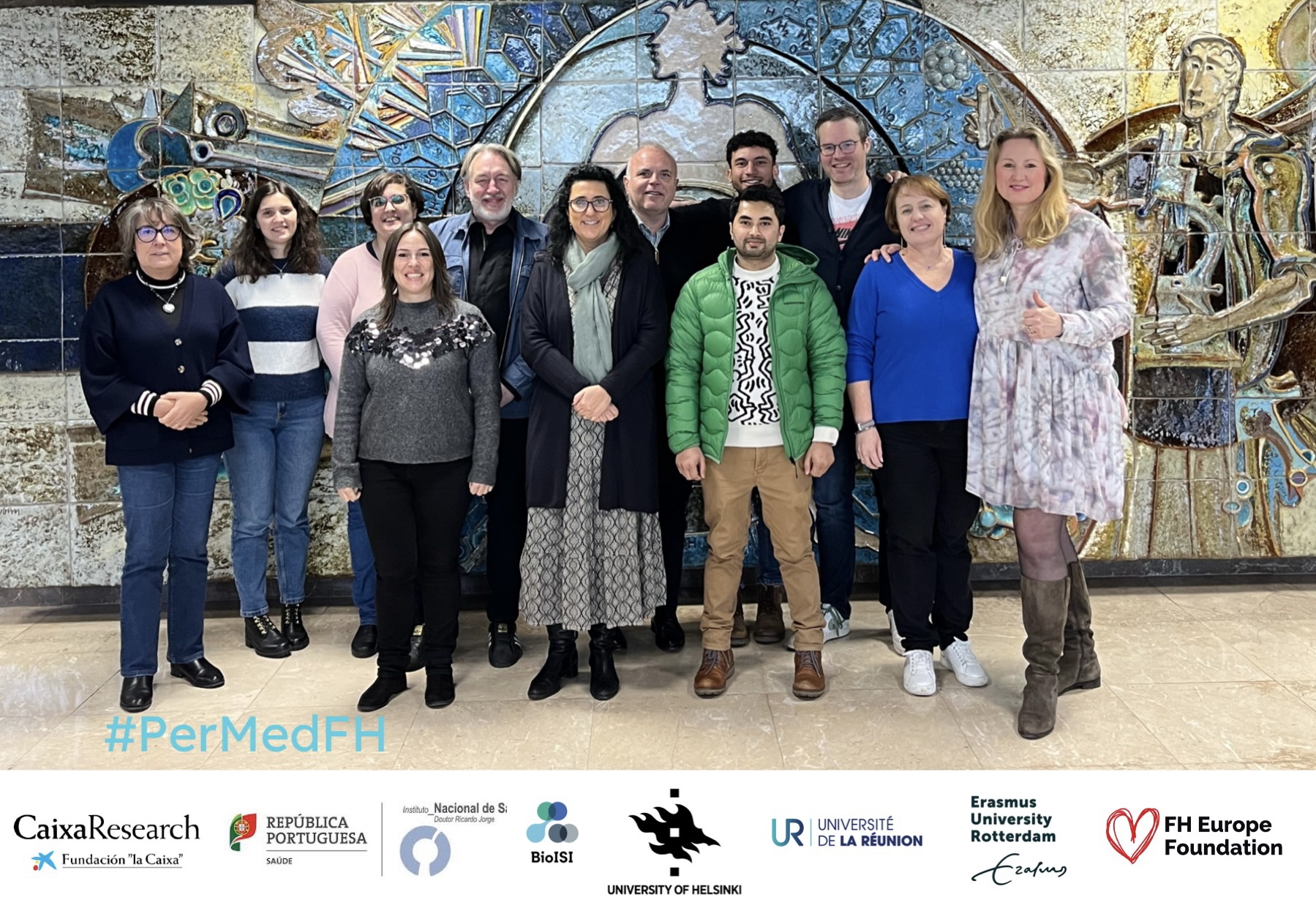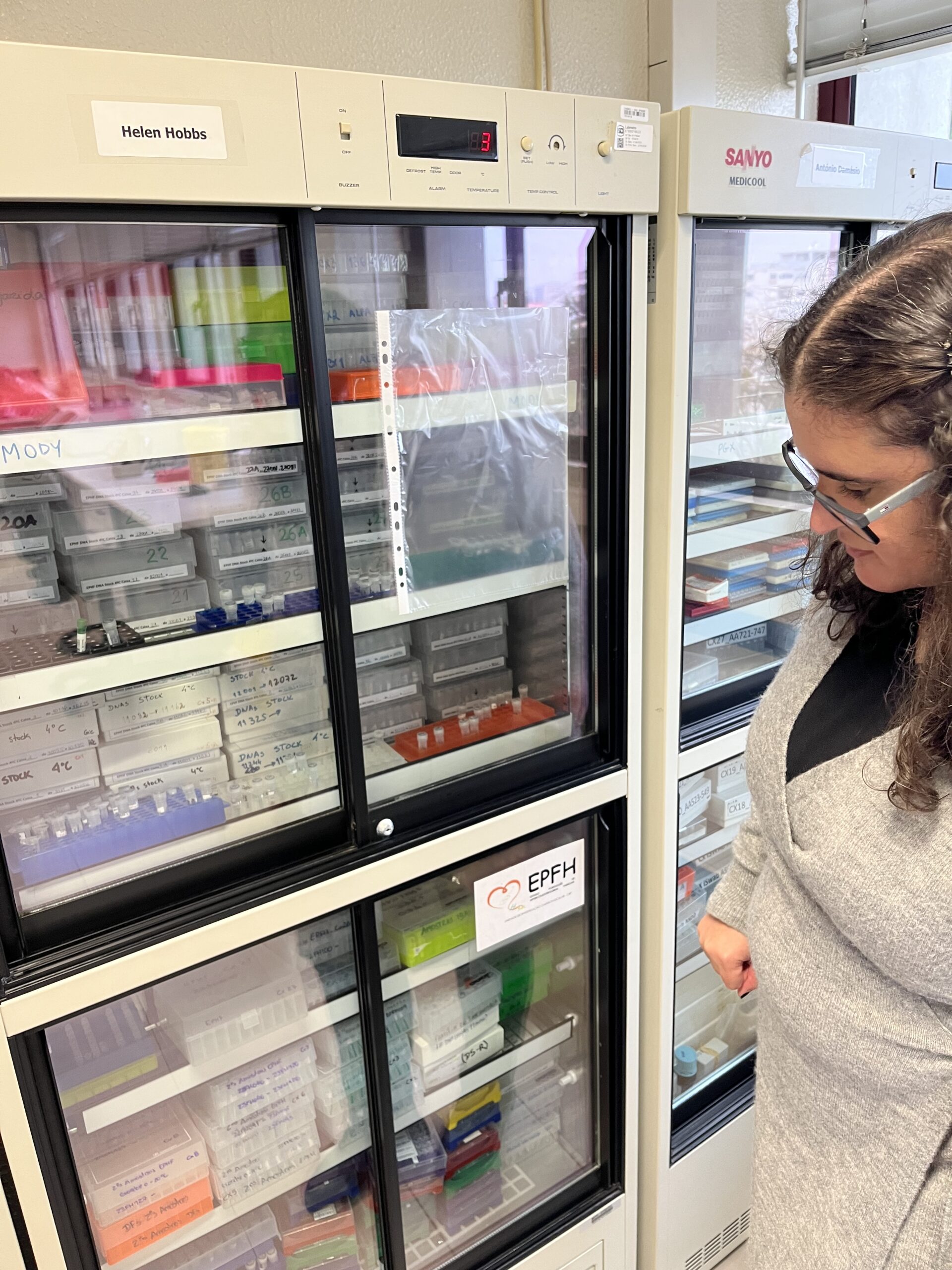FH Europe Foundation supports Rare Disease Day, observed annually on the final day of February. This year marks an extraordinary occurrence, as it falls on the rarest day, Thursday, February 29th.
FH Europe Foundation advocates for the two rare familial hyperlipidaemias, Homozygous Familial Hypercholesterolaemia (HoFH) and Familial Chylomicronaemia Syndrome (FCS) which share many commonalities with the 6000+ rare diseases currently identified. [1] FCS has a dedicated rare disease that falls on the first Friday in November, and this year we’re delighted to be announcing the very first dedicated HoFH awareness day on 4th May in which we’ll be raising awareness of the impact of HoFH on individuals and their families.
Rare Disease Day was created in 2008 by EURORDIS, the European Organisation for Rare Diseases and is coordinated by EURORDIS and its 65+ national alliance patient organisation partners. Over the years it has played a critical part in building an international rare disease community that is multi-disease, global, and diverse. It is united in its purpose to work towards equity in social opportunity, healthcare, and access to diagnosis and therapies for people living with a rare disease.


The Watts Family - daughter Avery Watts was diagnosed with HoFH when she was 6.
Other activities you can get involved in can be found on the dedicated Rare Disease page of EURORDIS.
Mark your calendars for the Europe Rare Disease Summit 2024, hosted by Bamberg Health on February 14 in Madrid. FH Europe Foundation has been invited to participate as an institutional collaborator and our CEO Magdalena Daccord, and Rare Diseases Project Manager, Jill Prawer, are among over 45 speakers, that will be addressing different topics over the day and will encompass government plans, access and financing, clinical research and innovation, artificial intelligence, and data.
Joining forces from all corners of Europe, this prestigious event brings together leading researchers, healthcare professionals, patient advocates, policymakers, industry experts, and rare disease patients and families with the aim to:
Tailored for rare disease advocates, healthcare professionals, industry leaders, and more, the summit is a hub for knowledge exchange and networking.
The event will include dynamic lineup of keynote speeches, interactive workshops, panel discussions and networking opportunities. Opportunity to share experiences, learn from experts, and inspire change.
The summit is free for patients and network members, and others can attend at no cost with an invitation from the FH Europe Foundation. You will find the invite and more information here.
Don't miss this opportunity to be part of a pivotal dialogue shaping the future of healthcare.
PerMed FH is an innovative project, aiming to identify precision medicine tools which will help diagnose early and manage correctly familial hypercholesterolaemia (FH).
Amsterdam, the Netherlands - 2024.01.11
The Instituto Nacional de Saúde Doutor Ricardo Jorge (INSA), in Portugal, through the Cardiovascular Research Group of its Department of Health Promotion and Prevention of Non-Communicable Diseases (NCD), held a launch meeting of the European project "PerMed FH - Personalizing diagnosis and treatment for Familial Hypercholesterolemia" on 9 and 10 January at its premises in Lisbon. Coordinated by INSA researcher and FH Europe Foundation’s Advisor, Prof. Mafalda Bourbon, this project aims to develop personalised medicine tools to improve the diagnosis and management of FH.
Developed in collaboration with researchers from the University of Helsinki, the University Hospital of Rotterdam, the University of La Réunion Medical School (INSARM unit), and with the FH Europe Foundation (FHEF) patient advocates and Ambassadors, "PerMed FH" was one of the winning projects of the CaixaResearch Health Research 2023 prize, a competition organised by the "la Caixa" Foundation. As a result, this important project, fostering meaningful co-creation, will receive financial support of around 1 million Euros.
The launch meeting was attended by all the partners and its main objective was to build a strong multidisciplinary team, present the project's different Work Packages and to discuss the project's 3-year programme. On this occasion, the international partners also had the opportunity to visit the INSA laboratories where the experimental part of this work would take place, related to functional studies on genes associated with FH. In addition, these studies will also be carried out in the mRNA Metabolism and Ass ociated Diseases Group of INSA's Human Genetics Department.
The PerMed FH project aims to functionally characterise genetic variants found in the 3 genes associated with FH by determining the activity of the protein responsible for removing cholesterol from the circulation, thereby improving diagnosis and stratifying cardiovascular risk. The aim of this project is also to carry out studies to optimise the treatment of FH individuals according to the variant found in order to personalise treatment, increasing adherence to therapy and thus contributing to reducing the risk of cardiovascular events.
FH is the world’s most common monogenic disorder, affecting 1 in 300 people. This means 2.5 million Europeans, with 2 million adults and 500,000 children have FH. Yet, to date only est. 10% are diagnosed and treated causing a huge burden of CVD, which is preventable. FH is caused by variants in 3 genes, the most common being variants in the LDLR gene located by a defect on chromosome 19. The defect makes the body unable to remove a compound from the blood, low-density lipoprotein (LDL), commonly known as the ‘bad’ cholesterol. This compound accumulates in the arteries from birth and poses a very high risk of developing cardiovascular disease at an early age. In fact, compared to the general population between the ages of 20 and 40, these individuals are twenty times more likely to develop significant cardiac complications, such as angina or myocardial infarction.

It is known that FH is associated to a defect in 3 genes, leading to the existence of nearly 6.000 different variants. However, around 3.000 of these variants are of unknown significance. In other words, from the 6.000 identified, half are found in people with a clinical diagnosis of FH but the way they impact LDL receptor protein function remains unclear, so their clinical diagnosis is not confirmed. This is one particular aspect on which the project aims at filling the gap. According to Mafalda Bourbon, the project proposes the characterization of all Portuguese variants and plan to achieve a definite classification in about 70% of all variants FH worldwide. For this purpose, the research group coordinated by Dr. Simon Pfisterer from the University of Helsinki, will be of paramount importance since they established novel tools for automated quantification of intracellular lipid storage, which allows the analysis more than one variant at a time.
Concerning treatment, Mafalda Bourbon explains that: “There are several drugs available, but the condition manifests differently, according to the variant type present and the activity of the LDL receptor found, in a given patient.” This means that not all individuals with FH need the same kind of treatment. In this way, Dr. Gilles Lambert and his coworkers, from the University of La Réunion Medical School Saint Pierre, due to their experience in cell biology techniques and drug assays, will give important inputs in developing personalized therapeutic options. Consequently, “(…) treatment can be optimized in a way that each patient will receive the right treatment improving the overall outcomes - increasing its adherence and decreasing side effects.”, points out Mafalda Bourbon.
The other aspect of innovation in PerMed FH is the engagement of patients alongside other researchers, clinicians and relevant stakeholders as experts and contributors in relevant surveys and focus groups, using the Delphi method, which will be led by Prof Eric Sijbrands, University Hospital Rotterdam, Rotterdam.
The role of FH Europe Foundation and its Patient Ambassadors is to identify patient experts, co-create appropriate communication and a dissemination plan, to collect patient stories, where FH was misdiagnosed, or incorrect use of treatment was applied in the absence of correct genetic diagnosis. The project aims to develop user-friendly communication strategies to increase health literacy among patients, their caregivers (often family members, parents and or spouses) and prospective patients, to educate about FH, the role of genetics and gene variants, precision medicine, and to empower them to better advocate for themselves, have more informed discussions with their practitioners to enable a shared decision process regarding FH management for better outcomes.
“We hear very often, from people with FH, that they are not included on finding the solutions for a better clinical management and care of their condition”, confesses Mafalda Bourbon. Taking this into account, the project includes an innovation way of building up the model of care to be further on applied in the clinical practice. It foresees a focus group with clinicians, scientists and, most importantly, people affected with FH and HoFH, where they will be able to co-create the model of care to better respond to their needs and expectations.
“The project offers a scientific breakthrough to address key unmet clinical needs for more than 30 million individuals affected around the globe. It will reduce not only the disease burden but also the emotional, economic, and societal burden – for the individuals, families, society and health care systems. It will enable earlier and correct diagnosis of the individuals including their relatives, which will inform more optimal disease management, preventing (further) cardiovascular disease and improving quality of life. For us this project means that we will be part of this change and that our work will save lives.” – concludes Magdalena Daccord.
Early diagnosis of FH, and differentiation between heterozygous FH or its rare form, the homozygous FH, enables appropriate management to be applied from childhood and is crucial to reduce the likelihood of suffering a heart attack and other cardiovascular health issues. In this regard, researchers and FH patients will collaborate to develop tools to better classify those affected with FH based on their gene defect and protein function, stratifying their cardiovascular risk and allowing for selection of the best treatment for each individual. These personalised medicine tools can be integrated into clinical protocols to provide early diagnoses and the implementation of effective management measures to prevent premature cardiovascular diseases and death, thereby promoting cardiovascular health and improving the quality of life and life expectancy of the affected individuals.


The major expected outcome – will be accomplished within the duration of the project (3 years) by means of the development of three main tasks. Researchers will make efforts to improve the diagnosis and the treatment and, finally, building up the model of care itself, being the latter one informed by the conclusions found in the two first ones.
Note: The project comes at the time when a great emphasis is put on cardiovascular disease prevention and cardiovascular health promotion with efforts like the one of the European Alliance for Cardiovascular Heath, of which FHEF is a Partner. The project compliments other efforts of the wider community related to early screening an FH diagnosis for CVD prevention, like the PERFECTO project, coordinated by FHEF.
Personalizing diagnosis and treatment for Familial Hypercholesterolaemia patients
999,912.00 €
*Project awarded in collaboration with the Fundação para a Ciência e a Tecnología
3 years